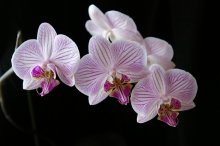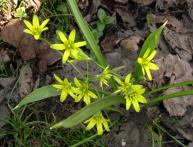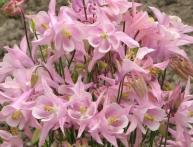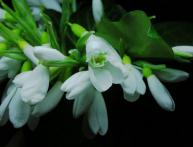How to plant an orchid bulb on your own, growing an orchid at home
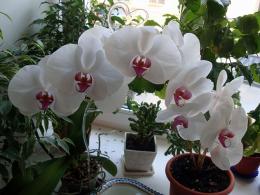
Plants from the Orchid family grow almost all over the globe. There are types of orchids that exist in warm, tropical climates, and there are those that feel quite good in the temperate climate of the northern hemisphere. In indoor and decorative floriculture you can most often find hybrid orchids and species from genera:
- phalaenopsis
- dendrobium
- cattleya
Orchids are very ancient plants; over many hundreds of thousands of years of existence, they have adapted very well to various living conditions. They are characterized by mimicry, which attracts pollinators,
symbiosis of the embryo with protozoan fungi to obtain carbohydrates from them for growth and development and the formation of pseudobulbs for water storage and vegetative propagation. Let's learn how to plant an orchid bulb or pseudobulb at home.
Content:
- What you need to plant an orchid bulb
- How to plant an orchid bulb, care after planting
- Some features of growing orchids
What you need to plant an orchid bulb
To plant a pseudobulb orchid at home, you need at least three things:
- bulb
- pot
- priming
Let's try to find out what it should be bulb orchids and where to get them.
Pseudobulb or bulb
Externally, the pseudobulb of an orchid may be similar to the bulb of other bulbous plants, or it may look completely unusual.It is important that in any case it is formed above the ground and most often has a green color. The main purpose of the bulb in all types of orchids is to accumulate and store water and nutrients.
The shape and size of orchid bulbs can vary. There are orchids with bulbs up to 15 cm in size, and others with very tiny bulbs. The inside of the bulb is soft, its tissues look like thick mucus. The top of the bulb is covered with a durable epidermis. The lifespan of a pseudobulb is from one year to 12 years.
Orchid bulbs can produce flower stalks and produce leaves, so they can be used to produce flowering orchids at home. A healthy bulb should be quite elastic and even hard, resembling to the touch beets, which has just been pulled out of the ground. You should avoid purchasing bulbs that are soft, gelatinous to the touch, and heavily wrinkled.
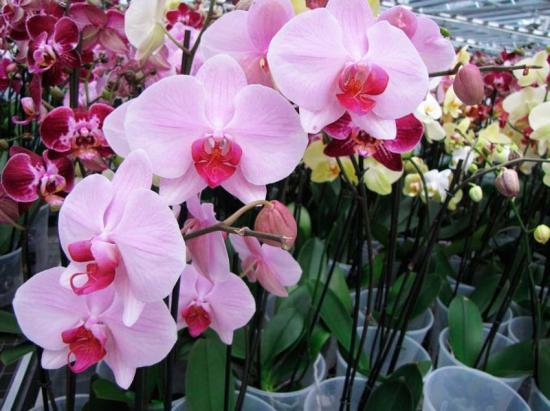
Some of the scales may be dry, their color may be green, gray-green or brown. If you cut a thin layer from an onion, a healthy onion smells like fresh herbs and cucumber. You can buy orchid bulbs either at a flower shop or in warm countries, most often this is done while traveling in Vietnam.
Pot and soil
Taking into account the fact that orchid bulbs quickly absorb the volume of pots, and also taking into account the fact that growing orchids requires visual control, you can choose transparent pots made of inexpensive plastic for them. You should not choose expensive ceramic containers, since sometimes you can remove and replant an orchid only by breaking the pot.
In order for ground orchid bulbs to germinate at home, you need to take care of a special composition.Some gardeners plant orchid bulbs in clean crushed bark or moss, but most often a mixture is prepared for them from:
- bark
- peat
- coconut fiber
When all three things are in place, you can begin landing.
How to plant an orchid bulb, care after planting
To plant an orchid bulb, two methods are used.
First way
The bulb without soil and substrate is placed at room temperature in a well-lit place. In addition, additional lighting is provided for the pseudobulb. There is no need to water or spray the bulb. Usually, after three to four weeks, the first villi-roots should appear on the bulbs, and, possibly, a green cone of a germinating bud. After this, you can plant the bulb in the substrate.
Second way
For this method you will need to take either a small transparent pot, but most often they use a disposable plastic cup of the required size. Several holes are pierced from the bottom and sides. Fill the glass with either pure moss or the above mixture to the middle, and place the onion in it, covering it with moss on top.
Important! At this stage, many inexperienced gardeners can make two serious mistakes. Some are trying to landing into ordinary garden soil. Others begin to water the bulb abundantly. In both cases it is unlikely that a positive result will be obtained. When planted in dense soil, the bulb will lose access to air, and with abundant watering, there is a high probability of the bulb rotting.
Care after landing
Immediately after planting, lightly spray the moss or mixture in which the bulb is planted. To do this, use a spray bottle and warm, settled water. Spraying every other day gives good results.Sometimes the moss that covers the bulb is simply moistened under the tap with warm water, squeezed out and returned.

To speed up the awakening of the pseudobulb, you can humidify the air in the room where there is a glass of it several times a day. It wouldn't hurt to arrange some extra light. When the roots begin to grow on the bulb and the bud begins to grow, it can be planted in a large container.
Some features of growing orchids
An important step in home growing orchids is plant transplantation. It is carried out in the following cases:
- the old pot has been completely taken over by the plant and has become small
- the mixture in which the orchid grew decomposed
- signs of root and pseudobulb rot appeared
Before transplanting, the pot of orchids is placed in a basin of warm water. After half an hour, the plant needs to be removed from the pot. If this cannot be done, the pot must either be carefully cut or carefully broken. If the roots look healthy, the plant is simply transferred to a new pot with planting mixture.
The health of the roots is indicated by their color; as a rule, it varies from light cream to light brown. These roots feel hard and elastic to the touch.
Diseased roots are black or dark brown in color and liquid oozes from them when pressed. They are pruned to clean and healthy areas. The sections are powdered with cinnamon or charcoal. The density of the planting mixture for growing orchids should be such that when watering, all the water passes through it in about 10 - 12 seconds.
Stagnation of water has a very negative effect on growth orchids. If it happens that the orchid is filled with water, then it needs to be dried.To do this, remove the plant from the pot and wrap the roots in several layers of paper towels until the desired result is achieved. You can simply put the orchid in a basin and wait 8 - 10 hours. When growing an orchid from a bulb, flowering can be expected no sooner than after 3 to 5 years.
Video on how to replant an orchid bulb:


